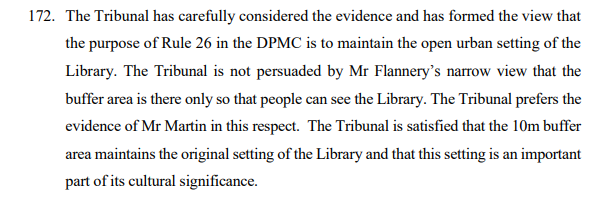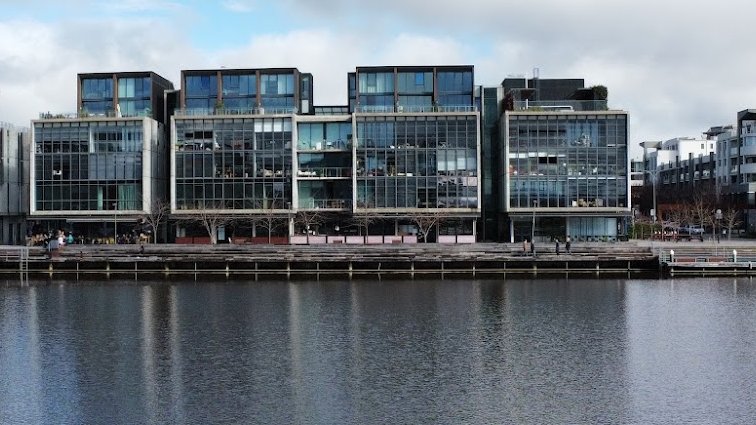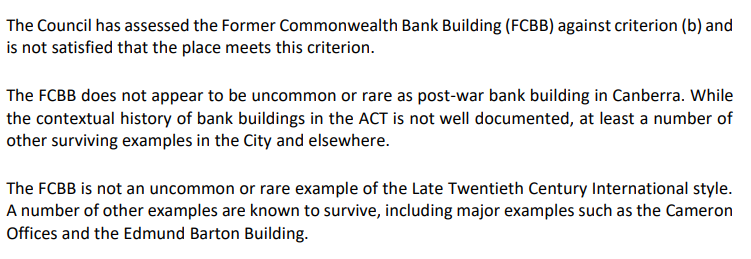
A couple of weeks ago, I wrote a thread about how heritage listing this building would be catastrophic to the sustainability, walkability, and prosperity of our city. Well, the Heritage Council has provisionally registered it, and folks its really bad. #Canberra #CBR #Urbanism 🧵
https://twitter.com/HowardFMaclean/status/1529006264558456832
Here’s a link to the Heritage Council’s reasons. There are 8 grounds for Heritage listing places in Canberra, and the Heritage Council found that this building only satisfied 1- ‘Importance to the course or pattern of the ACT’s cultural or natural history’
yoursayconversations.act.gov.au/former-commonw…
yoursayconversations.act.gov.au/former-commonw…
The Heritage Council was unsatisfied that the building was aesthetically or architecturally significant. It also isn’t satisfied that the building will contribute to an understanding of the ACT’s cultural history, or of any importance to a community or cultural group or so on
So why is this building ‘important to the course or pattern of the ACT’s cultural history’? You might assume that something historical happened at this building or it was significant for the role it played in the community.
And you’d be wrong. This building isn’t being listed - the early 1960s NCDC planning process and vision for civic is! The building is just the representative, the conduit. The Statement of Heritage Significance is very up front about this: 

Listing the building is bad. But listing the NCDC planning processes is downright awful, because it’s not limited to the actual building itself. The listing clearly outlines how this might be used to impose height limits on the surrounding properties. 

Important to note here that the early 1960s NCDC planning vision for Canberra was abysmal. This is the NCDC whose vision of the perfect city was endless open air carparks, grade separated highways, and suburbia. 

The then Chief Planner, Peter Harrison (inventor of the Y-plan) said that street life was “a third world notion”, and people doing things outside their homes was a failure of housing policy. The famous “deadness” of Canberra is by his intentional design.
nla.gov.au/nla.obj-216897…
nla.gov.au/nla.obj-216897…

Harrison left as NCDC chief planner in 1967, and spent his retirement suing to prevent the ‘overdevelopment of civic’ in the Supreme Court. He largely created Canberra as a sprawling, car centric city, and no one fought harder to keep it that way.
nla.gov.au/nla.obj-420123…
nla.gov.au/nla.obj-420123…
Seriously, the next time your bus takes 45 minutes to get to where you need to go, or you need to drive 20 kms to get to work in a city a tenth the size of Sydney, think of Peter Harrison. The man is largely responsible for hundreds of millions of wasted hours in travel time.
So the vision of city being heritage listed is one that looks like this. Maintaining the FCBB as a low rise portal building to a now abandoned Ainslie Avenue vista (the Canberra Centre now obviously gets in the way). 

Conceptually I find this kind of heritage listing of the planning intent and framework to be deeply problematic. Plans change, cities grow, and enshrining the plans of the long dead in heritage laws prevents our cities meeting the needs of the living.
As it stands, there’s a very real risk that this listing will be used not just to prevent any development on this site, but also any development in adjacent sites, on the basis that it will disturb the ‘symmetry’ and ‘graduated planning’ intended by NCDC. 

But it’s difficult to say, because these ideas exist at such a high level of abstraction that no one can definitively say what they mean. In the past, the ACT Council’s own interpretation of buffer zones have been found not to be strong enough by ACAT. acat.act.gov.au/__data/assets/… 

The other problem is of course that everything in Canberra is the product of the planning process that produced it. And every period of Canberra’s history is significant. If this building can be listed for this reason, then anything in Canberra can.
There’s no controlling element to this logic. There’s no reason why a nomination for a Kingston Foreshore building wouldn’t also be justifiable on the same grounds. It is also ‘associated with a significant period in the city’s development’. 

It’s also the product of a planning process (a very long and storied one) that had similarly prescriptive controls over the built form and master planning intentions. There’s no limits, it can be applied to anything.
suburbanland.act.gov.au/kingston/vision
suburbanland.act.gov.au/kingston/vision
It’s quite obvious from the listing that the Heritage Council really likes this building for aesthetic/architectural reasons, and it’s for those reasons that the Australian Institute of Architects nominated it. 

But the Heritage Act puts high requirements to list a place for these reasons. It needs to have a ‘high degree of creative or technical achievement’, or ‘importance in exhibiting particular aesthetic characteristics valued by the ACT community or a cultural group in the ACT’ 

The Heritage Council noted they couldn’t be satisfied on those grounds, because this is a rather typical Late Twentieth Century International style bank building, a style which isn’t exactly rare in Canberra either, so rarity is also out. 

How do you list something for aesthetic reasons when it’s not remarkable or rare and doesn’t fit in any of the aesthetic protection categories? Well you say it’s historically significant, and then cite the NCDC’s opinion of it’s ‘high standard design’ a bunch. 

You might ask “why do we, as a society, put up with this” given the huge social, environmental, economic and cultural costs of excessive, runaway heritage preservation in our cities.
https://twitter.com/heritage_why/status/1533677317196681216
And the answer is that we don’t get a say. The ACT Heritage Council decides, and the ACT Heritage Council is only allowed to consider heritage when listing a place. You can shout about how this will increase emissions all you want, they’re not allowed to care. 

Furthermore, the Heritage Council is by law, required to be stacked out by professional and amateur heritage nerds. And it’s great to have people that are really passionate about history, heritage and architecture in our land use debate. legislation.act.gov.au/View/a/2004-57… 

Problem is, there’s a very limited number of other perspectives, and the Heritage Council can’t care about those perspectives anyway. When the Planning Authority considers a development, they need to consult widely, and balance many concerns
But the Heritage Council doesn’t need to do that when listing places or making heritage guidelines. They didn’t need to ask Transport Canberra if this would damage light rail ridership (it will) or balance that consideration.
I’ll be putting in a submission to this listing, but as I said I will have to do so arguing over the abstract vibes of if this building is ‘historically significant’ or not, rather than on the climate, housing, economic and other costs of this decision.
And that's not great. We should be able to consider the present when deciding whether to preserve the past. The more I look at this system, the more broken it seems, and for succeeding generations we must do better. /🧵
• • •
Missing some Tweet in this thread? You can try to
force a refresh



